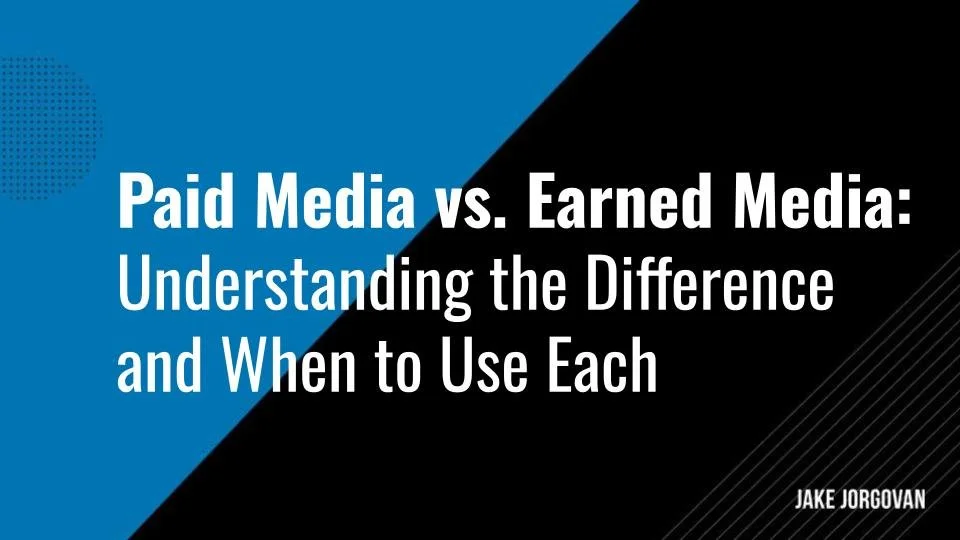Your Guide to the Right Paid Media Metrics to Track for Campaign Success (+ Tools)
Tracking the right metrics can make or break your paid media campaigns.
Without them, you risk wasting your budget and missing opportunities.
Key Performance Indicators (KPIs) are your best tools to gauge success.
They provide insight into what's working and what isn't.
By measuring the right KPIs, you ensure your campaigns align with business goals.
In this article, we’ll explore:
The importance of defining campaign goals
Key paid media metrics you need to track
Tools to measure and optimize performance
Let’s dive in to ensure every dollar spent drives results.
The Importance of Defining Campaign Goals
Clear goals act as the foundation for selecting effective metrics in paid media campaigns.
By aligning these goals with broader business objectives, such as increasing brand awareness or driving conversions, marketers can pinpoint which metrics will most accurately reflect their campaign's success and impact.
Here is an overview of how different campaign goals dictate the choice of metrics:
Brand awareness goals: Focus on metrics like reach and impressions. These campaigns aim to increase visibility and familiarize a broader audience with the brand. Success is measured by how many potential customers become aware of the brand, not necessarily immediate purchases.
Lead generation goals: Track click-through rates and lead conversion rates. The objective here is to capture interest and gather contact details from prospects. Metrics reflect the effectiveness of ads in prompting user interaction and initiating the sales funnel.
Sales-focused campaigns: Prioritize conversion rates and return on ad spend (ROAS). These initiatives target immediate sales, and metrics assess how well the ad spend translates into direct revenue. Monitoring ROAS offers a clear picture of financial effectiveness, adjusting campaigns for optimum profitability.
Key Paid Media Metrics to Track for Top-of-the-Funnel Goals
TOFU Paid Media Metrics Few Marketers Track
Marketers often overlook key video metrics that reveal how well their ads capture and hold attention. These insights show which elements truly resonate with viewers.
Here are four advanced metrics you should track to optimize your video ad performance:
Hook Rate
This metric shows how well your ad captures attention in the first few seconds. By measuring the percentage of 3-second video views relative to impressions, you can identify which imagery and messaging work best to hook your audience and stop them from scrolling.
1. Top Hold Rate
This measures how well your ad keeps viewers engaged after the initial hook. Calculated by dividing ThruPlays (complete views) by impressions, it tells you how effectively your messaging sustains attention.
2. Average Video Watch Time
This metric shows how long users are engaged with your video content. It’s useful for identifying if your key message is being delivered before users drop off.
3. View-Through Rate (VTR)
VTR tracks the percentage of viewers who watch your entire video compared to total impressions. A higher VTR indicates better alignment between content and audience interest, helping you gauge the effectiveness of your video in holding attention.
Use hook rate in combination with audience segmentation to test specific messaging for different groups.
If one segment shows a higher hook rate but lower hold rate, adjust the content to match their interests better.
This helps fine-tune your video strategy for deeper engagement with each target group.
Impressions and Reach
Impressions count the total number of times your ad is displayed, regardless of whether it's clicked.
Reach measures how many unique users have seen your ad.
Why it matters: Impressions and reach provide a clear view of how many people are being exposed to your brand. These metrics are key for understanding the effectiveness of top-of-funnel efforts, helping you gauge whether your ads are generating enough visibility to drive awareness.
To effectively measure and optimize your impressions and reach, implement these actionable strategies:
Monitor reach by audience segment: Analyze reach across different demographic and interest groups to see where your ads are gaining the most visibility.
Compare impressions to engagement: Track how impressions correlate with clicks and interactions to measure ad resonance.
Set frequency caps: Limit how often your ad is shown to the same user to avoid ad fatigue and ensure broader reach.
Track reach growth over time: Regularly measure reach to see if your campaigns are consistently expanding your audience and increasing visibility.
You can use reach alongside audience overlap metrics to avoid oversaturating the same users across multiple platforms.
By analyzing how much your audience is exposed to your ads on different channels, you can adjust budgets and placements to maximize unique reach without wasting spend on duplicated impressions.
Key Paid Media Metrics to Track for Lead Gen Goals
Click-Through Rate (CTR)
Click-Through Rate (CTR) measures the percentage of viewers who click on an ad after seeing it.
This metric reflects the ad's ability to engage users and generate interest.
Why it matters: A high CTR shows that your ad resonates with the audience and captures attention effectively. It signals strong relevance, helping you gauge which creative elements or messaging drive interest and should be scaled further.
To effectively measure and improve your Click-Through Rate (CTR), consider implementing these actionable strategies:
Segment by audience: Measure CTR across different audience segments to see which group engages most with your ads. This helps fine-tune targeting.
Test ad creatives: Rotate different headlines, visuals, and CTAs, tracking CTR for each version to identify top performers.
Analyze CTR by placement: Compare CTR across platforms and ad placements to see where your ads drive the most clicks.
Monitor CTR over time: Regularly review CTR trends to spot drops in engagement and adjust your strategy before performance weakens.
Pro tip: Analyze CTR variations by time of day and day of the week. You may find your audience clicks more during specific windows. Use this insight to schedule ads when engagement peaks, maximizing both CTR and budget efficiency by delivering ads when they're most likely to drive interaction.
Key Paid Media Metrics to Track for Sales Goals
Conversion Rate
Conversion rate measures the percentage of users who complete a specific action, such as making a purchase or signing up, after clicking on an ad.
Why it matters: Conversion rate directly ties your ad spend to meaningful outcomes like sales or sign-ups. It shows how effectively your campaigns drive action, helping you assess ROI and make informed decisions about budget allocation.
To effectively measure and improve your conversion rate, implement these targeted strategies:
Track conversions by ad variations: Compare conversion rates across different ad creatives to identify which ones drive the most actions.
Use dedicated landing pages: Align landing page messaging with ad copy to maintain consistency and improve conversion likelihood.
Monitor device performance: Measure conversion rates by device type to optimize for mobile or desktop where performance is strongest.
Analyze audience segments: Break down conversion rates by audience demographics to see which group responds best, helping to refine targeting strategies.
The best solution would be to run conversion tracking at the keyword level to uncover which search terms are driving high-quality leads.
This allows you to allocate budget to specific keywords that convert, rather than relying on broader performance metrics.
It’s a granular approach that improves both efficiency and targeting accuracy.
Cost Per Click (CPC)
Cost per click (CPC) measures the expense incurred each time a user clicks on an ad.
This metric helps you manage your ad spend efficiently.
Why it matters: Monitoring CPC allows you to adjust your budget allocation based on how efficiently each ad performs. By tracking this metric, you can identify which ads deliver higher engagement for lower costs, enabling smarter investment decisions.
To optimize your cost per click and enhance budget efficiency, consider implementing these actionable measurement strategies:
Set specific CPC targets: Define maximum CPC limits based on historical data or industry benchmarks to ensure your ads remain cost-effective.
Analyze device-level CPC: Break down CPC by devices (mobile, desktop) to see where your ads perform best and adjust bids accordingly.
Use geographic segmentation: Measure CPC across different locations to identify cost-effective markets and focus spend where performance is highest.
Monitor CPC over time: Track CPC trends weekly to identify potential budget inefficiencies and make timely adjustments to ad performance.
Consider leveraging automated bid strategies like Google Ads' "Maximize Clicks" to adjust your CPC in real time.
This approach can optimize your spend and potentially reduce costs by dynamically aligning your bids with campaign performance and conversion goals.
Return on Ad Spend (ROAS)
Return on Ad Spend (ROAS) measures the revenue generated for every dollar spent on ads.
It calculates the efficiency of your paid media campaigns by directly linking ad spend to generated income.
Why it matters: ROAS shows the direct financial impact of your ad spend, revealing how efficiently your campaigns drive revenue. A higher ROAS indicates you're maximizing returns, helping you allocate budget to the most profitable channels and strategies.
To accurately measure and optimize your Return on Ad Spend (ROAS), follow these steps:
Segment ROAS by campaign: Analyze ROAS for each individual campaign to identify which ones deliver the highest returns, allowing for reallocation of budget to maximize profitability.
Integrate conversion tracking: Ensure accurate ROAS calculation by implementing robust conversion tracking that ties specific revenue figures to each ad expenditure.
Adjust for customer lifetime value (CLV): Consider the long-term revenue generated by customers acquired through ads to provide a more comprehensive view of ROAS.
Regularly review and adjust bids: Optimize bids based on ROAS data to focus spending on ads that consistently perform well, reducing costs and increasing revenue.
Instead of focusing only on short-term ROAS, evaluate your campaigns based on lifetime value.
By tracking how much revenue a customer generates over time, you can better assess the true value of your ad spend.
This allows for smarter decisions when scaling campaigns or reallocating budget.
Customer Acquisition Cost (CAC)
Customer Acquisition Cost (CAC) measures how much you spend to acquire a new customer through paid campaigns.
It reflects the total cost of marketing and sales efforts divided by the number of customers gained.
Why it matters: CAC shows how efficiently you're converting paid media into actual customers. By monitoring CAC, you can evaluate whether your campaigns are driving profitable growth and identify areas where acquisition costs are too high, allowing for strategic adjustments.
To effectively measure and optimize your Customer Acquisition Cost (CAC), consider implementing these actionable strategies:
Break down CAC by channel: Measure CAC for each advertising platform to see which channels bring in customers most cost-effectively.
Track CAC over time: Monitor CAC regularly to spot upward trends, which could signal inefficiencies in your acquisition process.
Compare CAC to customer lifetime value (CLV): Ensure your CAC remains lower than your projected CLV to maintain profitability.
Include all costs: Factor in not just ad spend, but also overhead, marketing software, and sales team costs to get an accurate CAC.
To lower CAC, focus on retargeting warm leads rather than cold audiences. Use precise audience segmentation based on behavior, such as past site visits or abandoned carts.
This approach increases the likelihood of conversion while minimizing acquisition costs, allowing you to scale more efficiently.
Tools for Tracking Paid Media Metrics
Analytics Platforms
Analytics platforms like Google Analytics and Facebook Ads Manager offer real-time tracking and detailed reporting.
They provide deep insights into user behavior, campaign performance, and conversion paths.
With advanced features like custom attribution models, you can analyze how different touchpoints impact conversions. These tools enable precise optimization of your campaigns.
To effectively measure and optimize your paid media performance using analytics platforms,
follow these key steps:
Set up custom conversion tracking: In Google Analytics, create specific conversion goals that align with your business objectives, whether it's form submissions, purchases, or other key actions.
Use attribution models: Compare different attribution models in both Google Analytics and Facebook Ads Manager to understand which channels and touchpoints drive the most value.
Monitor user flow and drop-off points: Use funnel reports to see where users exit before converting, helping you optimize weak points in your campaigns.
Leverage UTM parameters: Tag your paid media links with UTM codes to track specific campaigns, ad groups, and keywords in Google Analytics for precise performance analysis.
Pro tip: To get the most out of analytics platforms, combine event tracking with custom dimensions in Google Analytics. This lets you capture unique user behaviors that align directly with your business model, giving you actionable data points that standard reports won’t reveal. It’s a tailored approach to understanding your audience.
AI and Automation
AI-based tools like Outbrain automate data tracking and optimize campaign performance by adjusting bids and placements in real time.
These tools use algorithms to analyze vast amounts of data, predicting which ads will perform best based on user behavior patterns, allowing you to focus on strategy while AI refines execution.
To effectively harness AI and automation in your paid media strategy, follow these steps:
Leverage predictive analytics: Use AI-driven tools to forecast campaign performance based on historical data, allowing you to adjust strategies before committing a significant budget.
Implement real-time bidding automation: Set parameters in AI tools to automatically adjust bids based on audience behavior, optimizing ad spend without manual intervention.
Automate creative testing: Let AI tools automatically A/B test different ad creatives, rotating the top performers while learning which designs and copy resonate with specific audiences.
Analyze AI-generated reports: Review performance insights provided by AI tools to identify patterns in user behavior and engagement, helping you refine future campaign strategies and optimize targeting.
Use AI tools to automate audience segmentation by analyzing behavioral patterns and identifying micro-segments within your broader audience.
This allows you to tailor messaging and bids for highly specific groups, improving both engagement and conversion rates without increasing manual effort.
It’s an efficient way to scale personalized campaigns.
BEst Practices for Optimizing Campaign Metrics
Optimizing campaign metrics involves continuously testing and refining ad elements like targeting, messaging, and creative assets.
Apply these best practices for refining ad performance and driving better results:
A/B Testing: Continuously test different ad elements like headlines, images, and calls to action. Small changes can significantly impact CTR and conversion rates. Testing ensures you’re optimizing each component for peak performance without relying on assumptions.
Adapting Strategy Based on Data: Regularly analyze campaign data to refine your audience targeting and messaging. Allocate budget to high-performing channels while adjusting underperforming segments to optimize results.
UGC Ads: User-generated content (UGC), especially from influencers, reduces ad fatigue and decreases Customer Acquisition Cost (CAC). It brings authenticity to your campaigns, leading to higher engagement and increased ROI, as customers trust real users over brand-produced content.
Test audience segmentation as part of your A/B strategy.
Instead of only testing creatives, split your audience into micro-segments based on behavior or demographics.
Run separate campaigns for each to identify which segment drives the most conversions. This lets you optimize targeting while keeping ad spend efficient.
Maximizing Campaign Success: The Power of Tracking the Right Paid Media Metrics
Choosing the right paid media metrics determines your campaign's success. First, tailor metrics to your specific goals to ensure every action aligns with your business objectives.
Besides, focusing on the right indicators optimizes performance and maximizes return on investment. We’ve reviewed different KPIs for all stages of the sales funnel.
Implement these metrics in your next campaign.
Track them diligently and adjust your strategies based on the insights you gather. This approach will lead to more effective campaigns and better results over time.
Remember, data-driven decisions are the cornerstone of successful marketing. Don't leave your campaigns to chance. Use the right metrics to guide your way to long-term success.
🎯 Ready to learn more? Recommended reads:













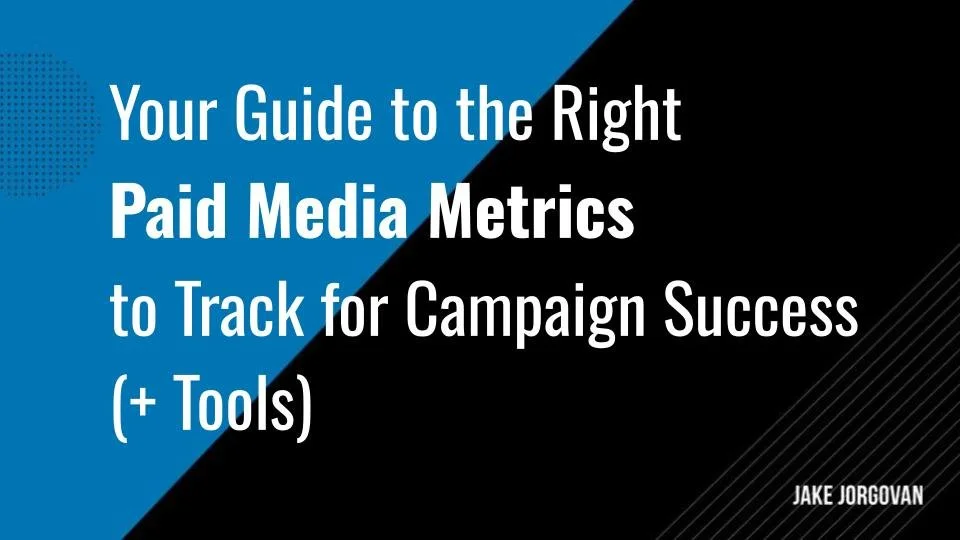



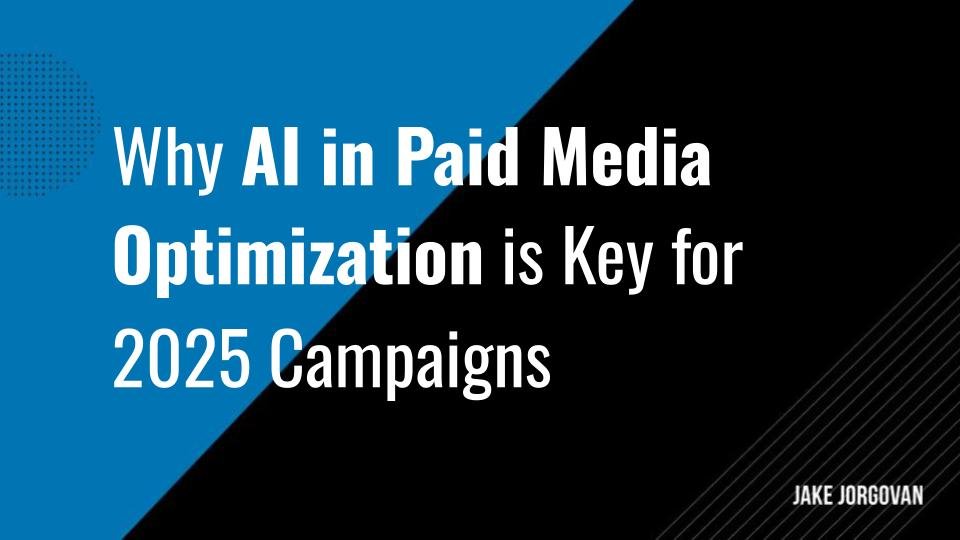
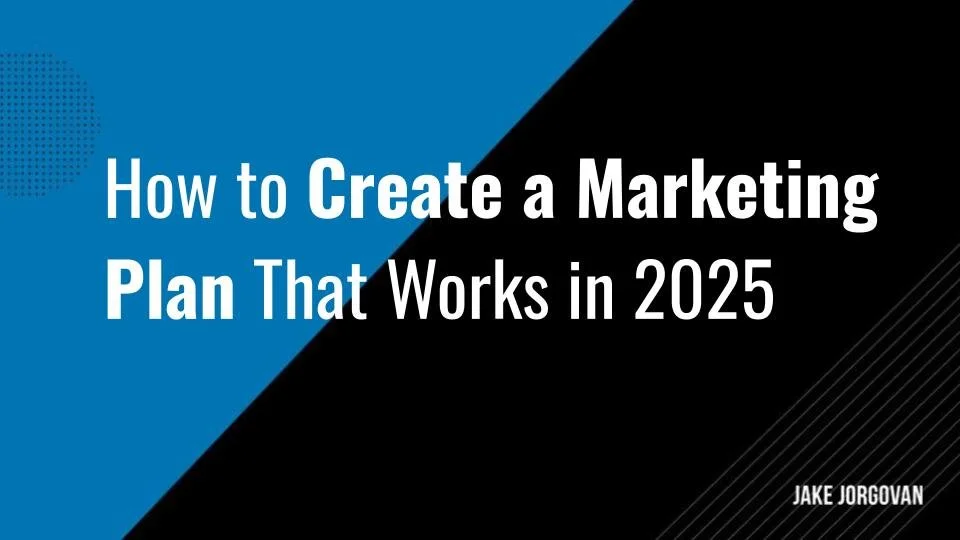
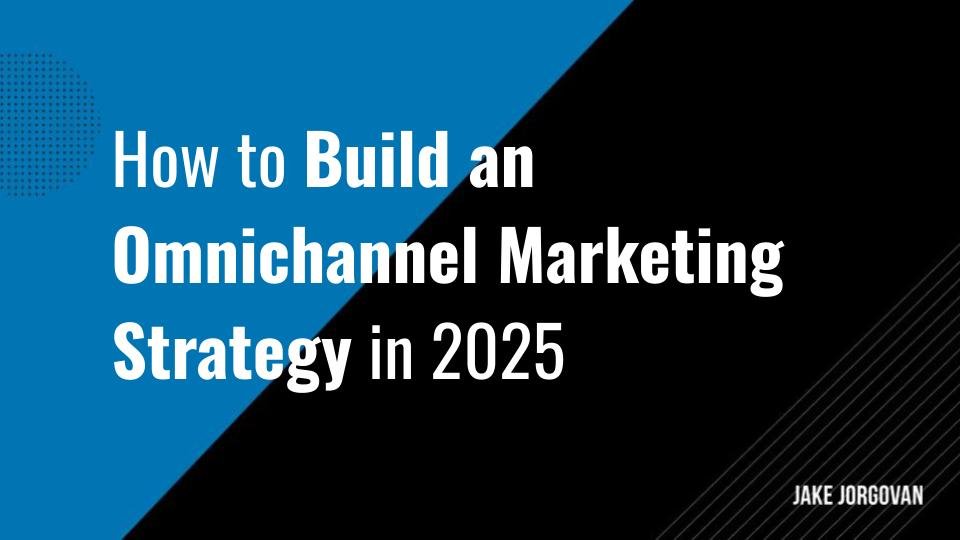

![Top 22 Paid Media Agencies to Work With in 2025 [Updated in March]](https://images.squarespace-cdn.com/content/v1/50baa49de4b0e51d69257e33/1705515561307-56Z45GN80B4L6J77ELDR/Top+12+Paid+Media+Agencies+to+Work+With+in+2024+%5BUpdated%5D.jpg)







